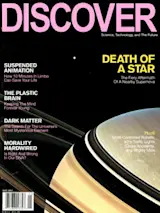Computers today barely connect with people. The human body evolved as a whole to sense and interact with the world, but computers sense us only at our fingertips. Even the fingertips aren’t allowed to do all they can; a computer that was designed to interact with us holistically would feel different from moment to moment in order to convey information. For more than two decades, I’ve been working on the grand project of virtual reality (VR) to bring the whole body into computing.
Image courtesy of NASA | NULL
You can think of an ideal virtual reality setup as a sensory-motor mirror opposite of the human body. Wherever the body has a sensor, like an eye or an ear, a VR system must present a stimulus to that body part to create a corresponding illusory world. The eye needs a visual display, for instance, and the ear needs an audio ...














